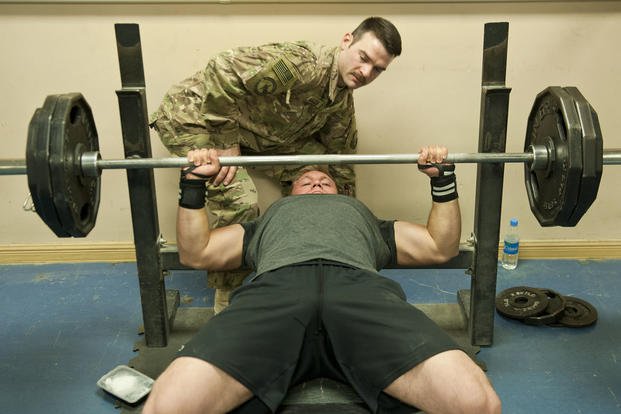Here is a short but sweet question that requires a fairly lengthy answer to do it justice. Periodization is nothing new to fitness and the training world, but it is one of those things that people have a hard time applying to their fitness program. Here is the email question:
Stew, I am in my mid 40s and have been doing roughly the same thing for more than a decade (run, lift, and some PT) -- seems to be working for me. I read about your periodization concept. I think I understand the basics, but what is periodization and why is it important to me?
This is the best definition I have seen. Periodization is an organized approach to training that involves progressive cycling of various aspects of a training program during a specific period of time.
If you have been an athlete, you already know what periodization is. You just may not have thought of it this way. When an athlete is preparing for football season, you will see that athlete lift and do sprints, agility drills and some medium-distance cardio for a solid base.
This cycle may last 2-3 months or longer as you prepare for practices in August. Once the season has begun, you now do 2-3 maintenance lifts per week, practices for more specific football skills and maintain your speed and agility.
After the season is over, an athlete may play another sport for the physical and mental break from football or get back into the weight room and rebuild power and strength after losing some during the season.
This is a typical preseason, in-season and postseason cycle. This is periodization.
Not all periodization models are the same. It truly depends on your goals. For instance, your periodized training program will be different during the preseason if you are a cross country runner or a football player. And the training programming for each is different when the athletes are in season.
So how does this apply to the average guy? Well, you may be periodizing and not even know it. There may be periods of time in the year where you run more than you lift or you lift more than you run. It just may not be part of a written or organized schedule.
Consider periodization and training the same way you think of a budget and money. Instead of having a daily workout or a weekly plan, these plans fit into a quarterly plan or even a yearly plan.
Think of the year in four 13-week cycles (52 weeks). So break up the year into quarterly goals where you change the focus on your training program a bit. Now you like to lift, PT and run. You still can lift, PT and run year-round but build up and taper down through the year and see how you like it.
For instance:
|
Jan.-March |
April-June |
July-Sept. |
Oct.-Dec. |
|
Continue with lift more/PT less -- run less -- mix in more non-impact cardio to give the legs a rest. Consider rucking in the winter climates for cardio. |
Less lift/progress with higher-repetition calisthenics and miles of running. Minimal non-impact option unless you feel pain when running |
Less lift -- more PT but start a taper for a max-reps testing cycle in September. Same with running. Focus on timed run speed/mile pace speed. |
Lift more/drop the high reps -- increase weight/decrease reps for strength/power. Taper running into more non-impact, cooldown cardio after lift workouts. Consider rucking in the winter climates for cardio. |
I have been doing this type of training program for more than 15 years now. I enjoy it, and my workouts get longer during the longer daylight times of the year, allowing me to run/PT when the sun rises during the summer. Or if you are a night person, the days are much longer and you can get your longer runs/workouts done in the evening when it does not get dark until 8-9 p.m. So for me, when the days are longer, my workouts are longer.
Why do this? I have found that you should break up your focus through the year for best results if you are:
- Trying to push your performance and get really strong with your lifts.
- Get crazy good at higher-repetition calisthenics.
- Run a fast-paced, five-mile run.
- Ruck for long distances.
As with any athletic training program, you can still overdo it with this type of programming and need to consider sleeping more, eating well and hydrating properly to recover fully. But if you are into a healthy habit of fitness and like what you have been doing for the past decade and you are seeing the results you want, then why worry about it?
I always say -- "You cannot argue with results!" And if you are seeing the results you are striving for, doing it in a healthy manner and not getting injured several times a year, who am I to say you need to periodize your training program?
Stew Smith is a former Navy SEAL and fitness author certified as a Strength and Conditioning Specialist (CSCS) with the National Strength and Conditioning Association. Visit his Fitness eBook store if you're looking to start a workout program to create a healthy lifestyle. Send your fitness questions to stew@stewsmith.com.
Want to Learn More About Military Life?
Whether you're thinking of joining the military, looking for fitness and basic training tips, or keeping up with military life and benefits, Military.com has you covered. Subscribe to Military.com to have military news, updates and resources delivered directly to your inbox.



















